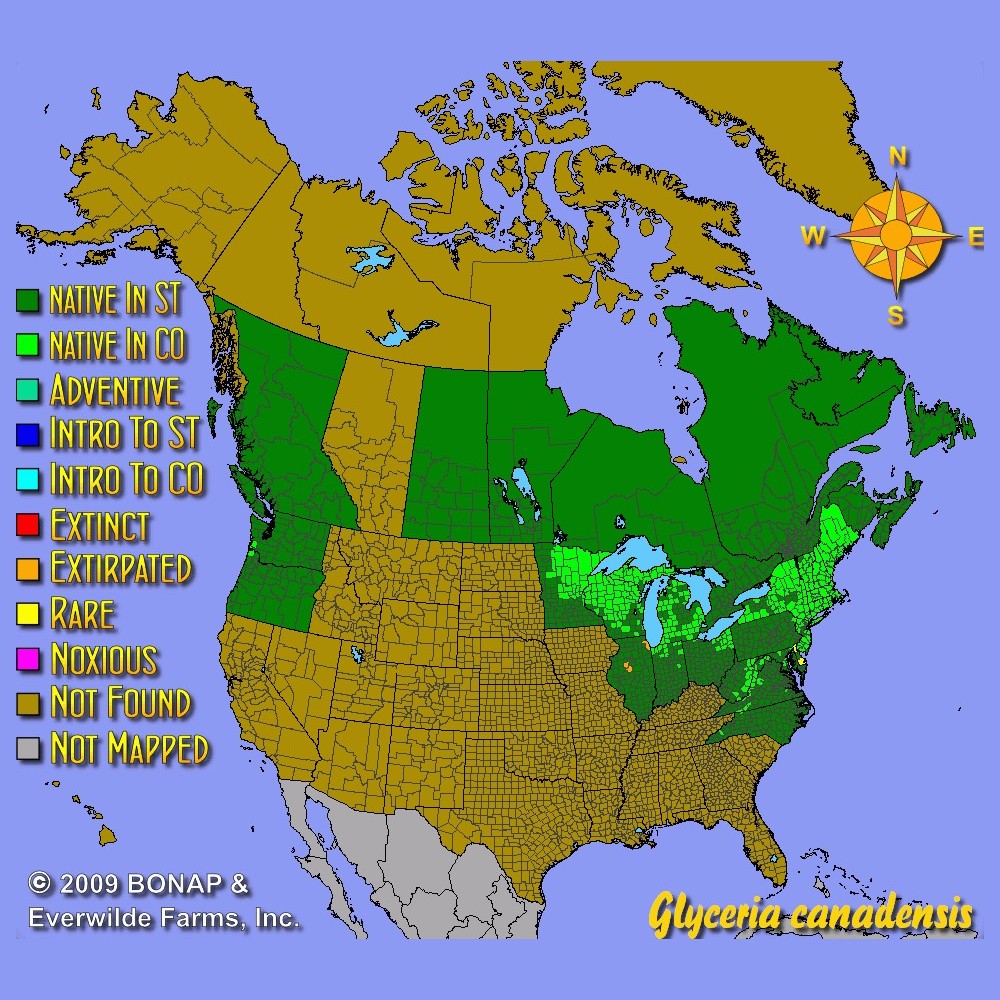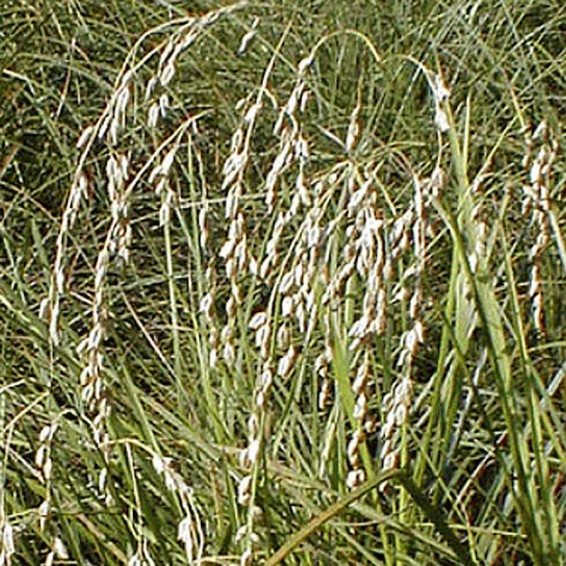Rattlesnake Grass Seeds
- HOW TO GROW
- FAST FACTS
- REVIEWS
HOW TO GROW
Sowing: Direct sow either in late fall or early spring. Press the Rattlesnake Grass seed into the surface of the soil, compacting the soil very firmly. For spring planting, mix the Glyceria Canadensis seeds with moist sand and store in the refrigerator for 60 days before planting. Keep the soil lightly moist until germination.
Growing: Water seedlings regularly until they become established. This plant thrives in moist or wet soil, even shallow standing water and seasonal flooding. It also adapts well to a variety of soil types including clay. It spreads quickly by rhizomes to form a natural colony. It makes an excellent choice for erosion control, as well as being popular for wetland restoration. This plant provides cover and forage for small birds and other wildlife.
Seed Saving: At the end of the season, the seed heads will begin to ripen and turn color. Strip the seed from the stem, and separate the seed from the plant material. Store the Rattlesnake Grass seed in a cool, dry place.
FAST FACTS
Common Names: Rattlesnake Manna Grass
Latin Name: Glyceria canadensis
Species Origin: US Native Grass or Sedge
Type: Native Grasses, Cool Season
Life Cycle: Perennial
USDA Zones: 2, 3, 4, 5, 6
US Regions: Midwest, Northern, Northeast
Seeds per Ounce: 70,000
Stratification: No Stratification
Germination Ease: No Stratification
Sunlight: Full Sun, Part Sun
Height: 30 Inches
Color: Green, Brown
Bloom Season: Blooms Early Summer, Blooms Late Summer
Good job
Thanks
DESCRIPTION

HOW TO GROW
Sowing: Direct sow either in late fall or early spring. Press the Rattlesnake Grass seed into the surface of the soil, compacting the soil very firmly. For spring planting, mix the Glyceria Canadensis seeds with moist sand and store in the refrigerator for 60 days before planting. Keep the soil lightly moist until germination.
Growing: Water seedlings regularly until they become established. This plant thrives in moist or wet soil, even shallow standing water and seasonal flooding. It also adapts well to a variety of soil types including clay. It spreads quickly by rhizomes to form a natural colony. It makes an excellent choice for erosion control, as well as being popular for wetland restoration. This plant provides cover and forage for small birds and other wildlife.
Seed Saving: At the end of the season, the seed heads will begin to ripen and turn color. Strip the seed from the stem, and separate the seed from the plant material. Store the Rattlesnake Grass seed in a cool, dry place.
FAST FACTS
Common Names: Rattlesnake Manna Grass
Latin Name: Glyceria canadensis
Species Origin: US Native Grass or Sedge
Type: Native Grasses, Cool Season
Life Cycle: Perennial
USDA Zones: 2, 3, 4, 5, 6
US Regions: Midwest, Northern, Northeast
Seeds per Ounce: 70,000
Stratification: No Stratification
Germination Ease: No Stratification
Sunlight: Full Sun, Part Sun
Height: 30 Inches
Color: Green, Brown
Bloom Season: Blooms Early Summer, Blooms Late Summer
Reviews
Review
Good job
Thanks



